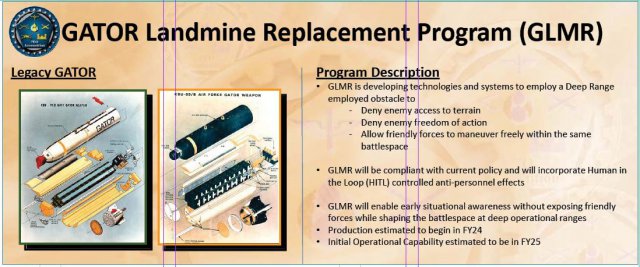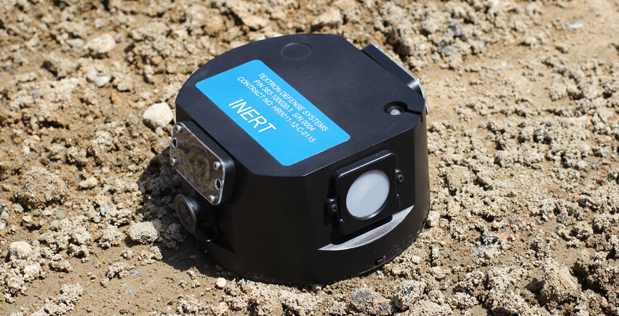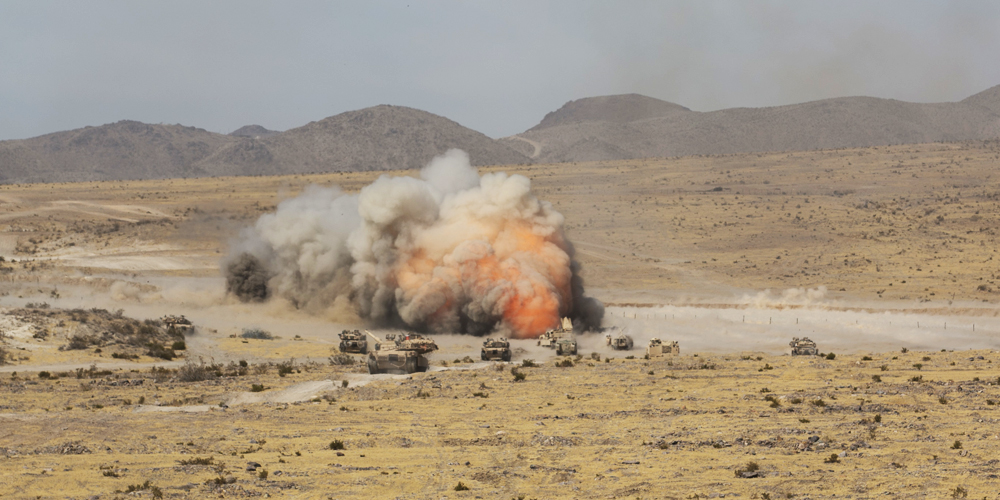
The Ottawa Treaty banning ‘dumb’ landmines caused a major capability gap in terrain shaping, area access and area denial, but it also created a massive possibility for innovation—and teamwork between government and industry. Now, ARCIC, PEO Ammunition and industry are working together to develop a capability that will go far beyond dumb.
by Mr. Steve Stark
The Gator Landmine Replacement (GLMR) program is, in many ways, emblematic of the kinds of tough but necessary technical challenges that the Army and DOD need to tackle in the coming years as they develop requirements for innovative new battlefield capabilities with strategic consideration for their long-term use and ultimate disposal—in short, the entire life cycle.
Because of international restrictions on the use of landmines and the aging of the U.S. stockpile, DOD needed a better solution to replace the Gator Landmine system, which dates to the 1980s. Right now, four teams are trying to solve that problem after a Defense Advanced Projects Research Agency (DARPA) study showed the feasibility and affordability of a potential technological solution. A whole new way of thinking about terrain-shaping may spin off technologies that have considerable utility in other realms.
It’s one thing to put a lot of “dumb” explosives in a field to prevent access; it’s another thing entirely to create a sophisticated system that allows access to friendly forces while denying access to enemies. But it’s just this kind of tantalizing problem that technology increasingly is solving through innovation. Many times these innovators are small companies, and the Army is looking for ways to make it easier for them to do business with the government.
Along with Russia, China and other countries, the U.S. is not a signatory to the treaty officially known as the 1997 Convention on the Prohibition of the Use, Stockpiling, Production and Transfer of Antipersonnel Mines and on their Destruction, commonly known as the Ottawa Treaty. However, it has been U.S. policy during the Obama administration to hew to the treaty’s intent. The treaty requires any anti-personnel (AP) munition to have a human-in-the-loop initiation system, which significantly impacts the effectiveness of all current mine systems in the U.S. inventory. That left a major capability gap. But it also created opportunity.
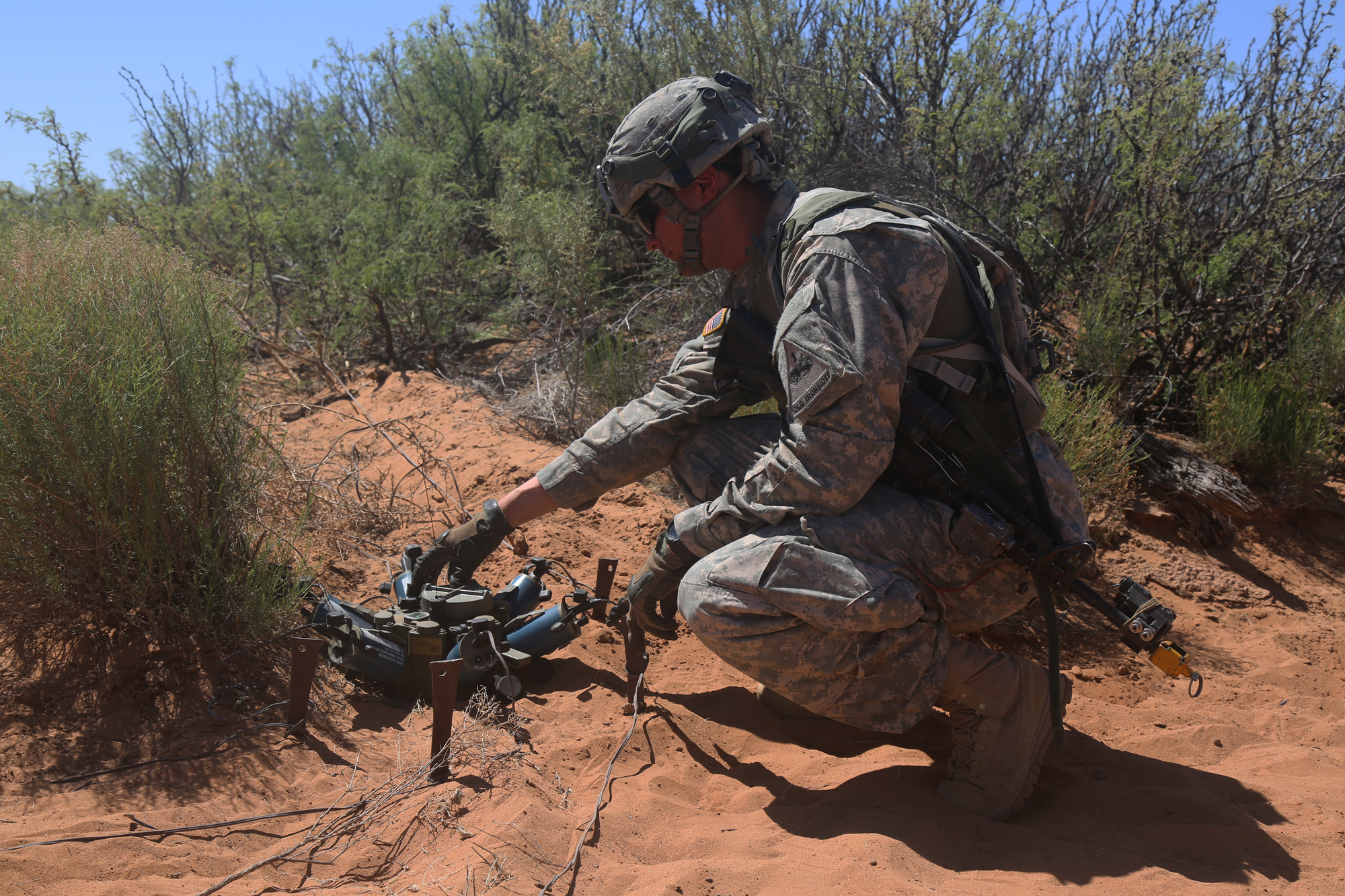
HALFWAY THERE
Pfc. Eric Groom, a combat engineer assigned to the 40th Engineer Battalion, 2nd Brigade Combat Team, 1sst Armored Division, adjusts and M7 Spider Networked Munition system during Network Integration Evaluation 16.2 at Fort Bliss, Texas in May 2016. The spider represents a partial solution to problems created by mines left on the battlefield after hostilities end; PEO Ammunition, DARPA and a handful of companies and government agencies are working to solve the problem completely. (U.S. Army photo by SPc. Cheneé Brooks, 55th Combat Camera)
AP landmines, combined with anti-vehicle (AV) landmines, shape terrain on the battlefield. They deny terrain, impede mobility and enhance the effectiveness of friendly direct and indirect fires.
The problem with the landmines comes when a conflict is over and victim-triggered AP mines litter the countryside. The Ottawa Treaty came about after many years of unexploded mines killing innocent civilians and stories of dead or maimed children, farmers and livestock as the result of munitions never cleared.
The Army was trying to partially close that gap with the M7 Spider Networked Munition program. At the same time, DARPA was running the ADAPTable Sensor System (ADAPT) program, which sought to find novel uses and means of rapid production for comparatively cheap commercial intelligence, surveillance and reconnaissance (ISR) sensors. Core hardware and software could be updated as commercial sensors were updated. The results were ADAPT hardware and software packages that could be used for unattended ground sensors with potential military applications.
A small California company called Fantastic Data showed that the ADAPT approach was feasible, and DARPA sensed a solution to the landmine capability gap. DARPA asked Fantastic Data to further develop its applications to see if such a capability were feasible. When Fantastic Data showed that it was, DARPA handed the concept over to the Program Executive Office (PEO) for Ammunition and the U.S. Army Training and Doctrine Command (TRADOC) to try to make it a reality. The two organizations turned to the DOD Ordnance Technology Consortium (DOTC) and its industry and academia component, the National Armaments Consortium, to find participants willing to compete.
The difference was that TRADOC did not come up with requirements in a vacuum; instead, the command and the GLMR product manager put out a call through DOTC during the analysis of alternatives phase to find out what industry could do, and used “other transaction authority” (OTA) agreements as the contracting vehicle. Enabled by the National Defense Authorization Act for Fiscal Year 2010, OTAs are designed for use in basic, applied and advanced research and prototyping projects when it’s in the government’s best interest not to use conventional contracts, grants or cooperative agreements.
OTAs by nature do not have to comply with the many rigorous reporting and documentation requirements of the Federal Acquisition Regulation (FAR). The ability to bypass all the red tape of the FAR provides OTAs with much more flexibility as well as a valuable entry point for “nontraditional” defense companies—in other words, pretty much any company not currently doing business with the government.
IN SEARCH OF A NEW MINDSET
Using the OTA through DOTC “allows us to get to small businesses that don’t normally partner with the government,” said Col. Christopher Hall, chief of the Maneuver Support Division of TRADOC’s Army Capabilities Integration Center (ARCIC).
“We go out and say, ‘Hey, we need somebody to look at the Gator Landmine Replacement problem. Here’s a description of what we’re looking for; this is a statement of objectives on what we want it to look like.’ And then we send it out to all 500 [DOTC] members.”
Other than being a mesh-networked, human-in-the-loop system of munitions, exactly what GLMR will look like and how it will perform have yet to be determined.
The prospective GLMR is “really a family of capabilities that falls underneath this broad topic area of terrain-shaping,” said Matt Butler, deputy project manager for Close Combat Systems. “The Army’s legacy mine capability … is gone, and that includes capabilities that we use to shape the fight in the deep sense—well forward of our FLOT [forward line of own troops]—but also shape the terrain in a tactical sense, in our engagement area, and then closer in a protective obstacle sense.”
All of those capabilities translate to an area of significant size—hence the complexity of the problem. Close refers to hand- or vehicle-emplacement of obstacles out to 4 kilometers from friendly troops. Mid is rotary wing- or artillery-delivered obstacles 4 to 17 kilometers from FLOT. Deep is Air Force bomber- or fighter-delivered obstacles from 17 kilometers out to 300 kilometers, Butler said.
The idea is that GLMR would not only prevent an enemy from using the mined territory, which is something that AP and AV mines do very well, but the new technology also would allow friendly forces to maneuver freely in the same space, something that AP and AV mines heretofore could not.
GLMR’s concept means that when something or someone enters the shaped terrain, a sensor alerts a Soldier, who can assess the alert and respond appropriately, either eliminating a threat or logging an incident. A meshed network is self-repairing: Each sensor can communicate with all of the others so that if there is a breach or malfunction and a sensor is destroyed, the rest of the network will continue to function and the barrier will remain intact.
Such a network has much wider potential use in military and nonmilitary environments, assuming that it can be made to function as intended. Just the communications capability—which, according to Thomas Hammel, a founder of two-person Fantastic Data, must go beyond 4G LTE—could find utility in many different applications.
But, Hammel noted, while his company did show the feasibility of the concept, “nobody has demonstrated it, and that’s one of the things that our team is going to do in phase one.” For him, “There’s analysis that says you can do something and then there are simulations that say you can do something, and then there’s reality. And lots of things fall apart when they get to reality.”
In many respects, that’s exactly what the ARCIC and PEO Ammunition folks are working on in a broader context—giving promising capabilities a better chance to succeed when they do come up against reality. And they want to do this as fast as possible.
MAKING SPEED HAPPEN
Fantastic Data and three other teams—the latter including defense industry stalwarts Orbital ATK Inc., Textron and Northrop Grumman Corp., along with nontraditional subcontractor partners—are trying to develop the GLMR capability in nine months (a very short timeline in the DOD procurement world) and at relatively low cost. The problem is not a simple one, according to Hammel. But it has the U.S. military’s attention, which makes all the difference. That wasn’t always so.
“We really hadn’t had any significant R&D [research and development] funding or any terrain-shaping capability for deep [obstacles] in a long time,” Butler said. And funding is everything. “It’s been my experience … that it’s very difficult to lure industry to the table if there’s not a commitment by the government to do something,” Hall said.
Butler added, “We had a requirement on the shelf for dominating mobility through terrain-shaping effects.” Suddenly it had very high-level attention and “money became available in FY16 to begin the GLMR program,” with delivery of an initial operational capability set for 2025.
That proved to be a daunting timeline for such complex work, Butler said, because “we haven’t been spending money on the deep part.” Rather than go through the efforts that might normally accompany a future Acquisition Category ID program, he said, “We have to go right to industry to get to those ideas,” which led to DOTC, the OTAs and, Butler said, the call to industry: “ ‘Hey, here’s our ICD [initial capabilities document] concepts and requirements, what do you have available in industry?’ ”
GLMR is still pre-milestone A, which means there is time to explore technologies and not get locked into requirements that won’t work for the long haul. OTAs provide the flexibility to get into a back-and-forth with industry to look at potential “ilities,” as Butler put it, or the “incorporation of all the system development considerations early and not just concept technologies. This is to ensure that we maximize life cycle affordability by considering systems logistics, supply chain, packaging, transportation, cybersecurity, training, demilitarization, etc.”
OTAs also allow for things to be done far more rapidly. “We were able within six months to get industry on contract,” Butler said. “They developed their concepts based on the requirement we wrote coming out of the Joint Terrain Shaping Working Group.”
OTAs also allow industry more involvement in developing realistic and workable requirements based not just on what the Army wants, but also on what industry can do—which the Army might not even be aware of yet.
To that end, Butler said, “We had a classified briefing [to industry] up front, like, ‘Hey, here’s some of the challenges especially from a cyber and EW [electronic warfare] standpoint,’ so that they could have their systems address some of it. But then they brought in their new ideas and technologies.”
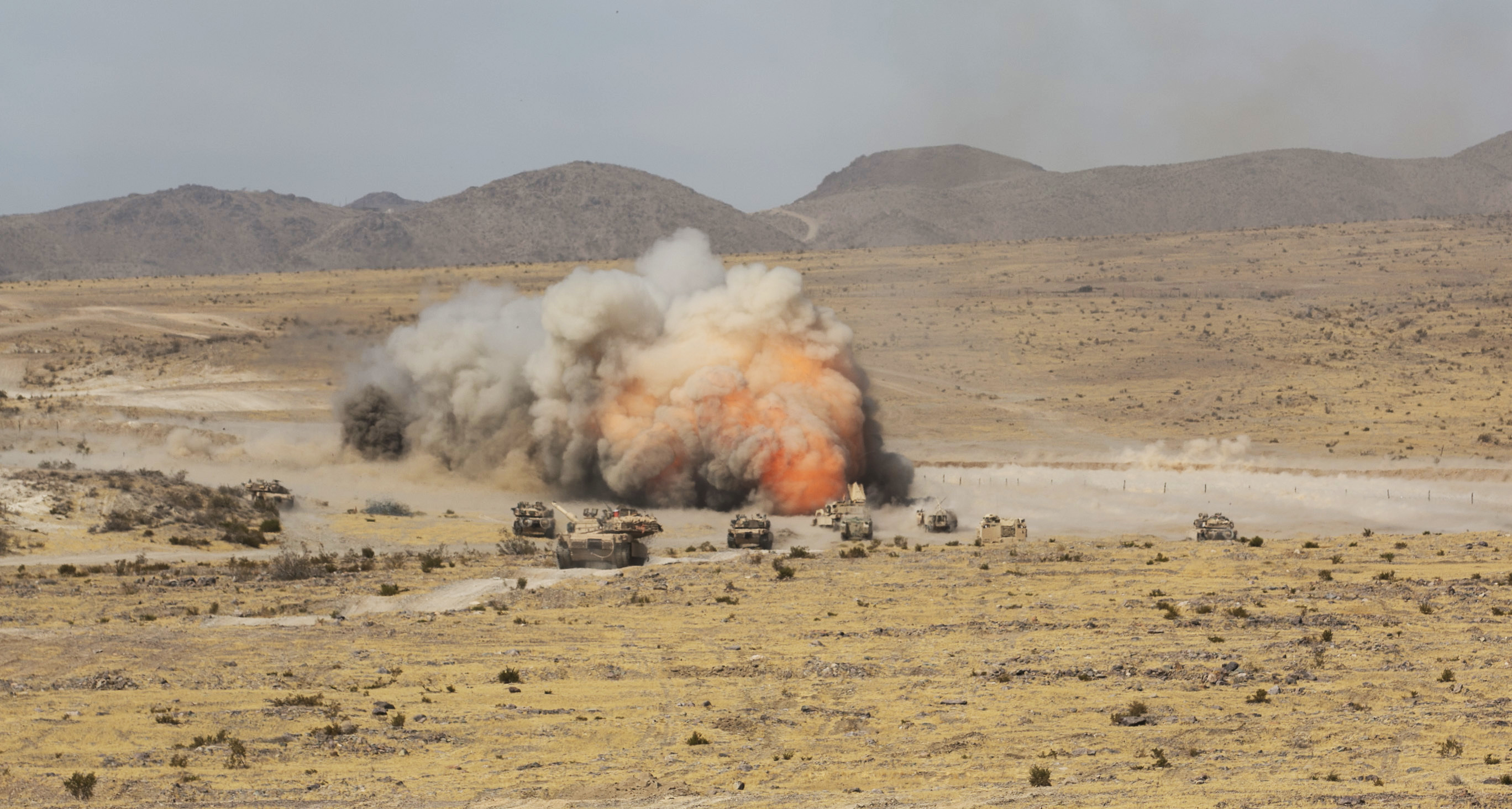
CHARGED UP
Soldiers from the 3rd Armored Brigade Combat Team (3rd BCT), 1st Cavalry Division (1 CD) detonate a mine-clearing line charge during live-fire training at the National Training Center at Fort Irwin, California, in October 2016. GLMR’s concelpt involoves a self-repairing, meshed network that will continue to function in the ecent of a breach or snesor malfuntion, and has the poetential for broader application in military and nonmilitary environments. (U.S. Army photo by Staff Sgt. Leah Kilpatrick, 3rd BCT, 1 CD)
CONCLUSION
For Jerry Whiteside of Orbital ATK, which has done business with PEO Ammunition for many years, the classified briefing and industry days showed that there was a lot that industry could do that government wasn’t aware of and “had things that were very high on the risk register … technically very challenging [things], and within the first few months we demonstrated the ability to address probably the top three or four risks they had on their risk register.”
Whiteside said that Orbital ATK has found the more collaborative OTA environment to be a sharp contrast to handing industry a requirement that it may find overly prescriptive. Now, he said, “We are very clear that government is looking for industry to help them lead them, and ourselves—lead the product to as early a fielding as possible.”
It’s been appealing to collaborate “to develop those requirements, to develop what the ultimate product will look like,” Whiteside said. For him and his team, that’s a “very positive business relationship between the government and industry.”
Hammel, whose Fantastic Data has done much of its work over the last two decades in a DARPA environment with even fewer restrictions than OTA, went a step further, expressing the sense that if competitors could work more closely, perhaps on subsets of the same problem, they might significantly speed the process of coming to the best solution and save the government time and money. But he acknowledged that the wall between competitors is understandable.
As potentially promising as that greater unity of effort sounds, the Army and DOD are not yet at that point with industry. But as they look for more diverse ideas and more sensible ways to acquire more strategically and promote innovation, it could evolve into yet a newer way of thinking.
For more information, go to https://www.pica.army.mil/pmccs/AreaDenial/Overview.html#nogo06.
MR. STEVE STARK is senior editor of Army AL&T magazine. He holds an M.A. in creative writing from Hollins University and a B.A. in English from George Mason University. In addition to more than two decades of editing and writing about the military, science and technology, he is, as Stephen Stark, the best-selling ghostwriter of several consumer health-oriented books and an award-winning novelist.
This article was originally published in the January – March 2017 issue of Army AL&T Magazine.
Subscribe to Army AL&T News, the premier online news source for the Acquisition, Logistics, and Technology (AL&T) Workforce.


